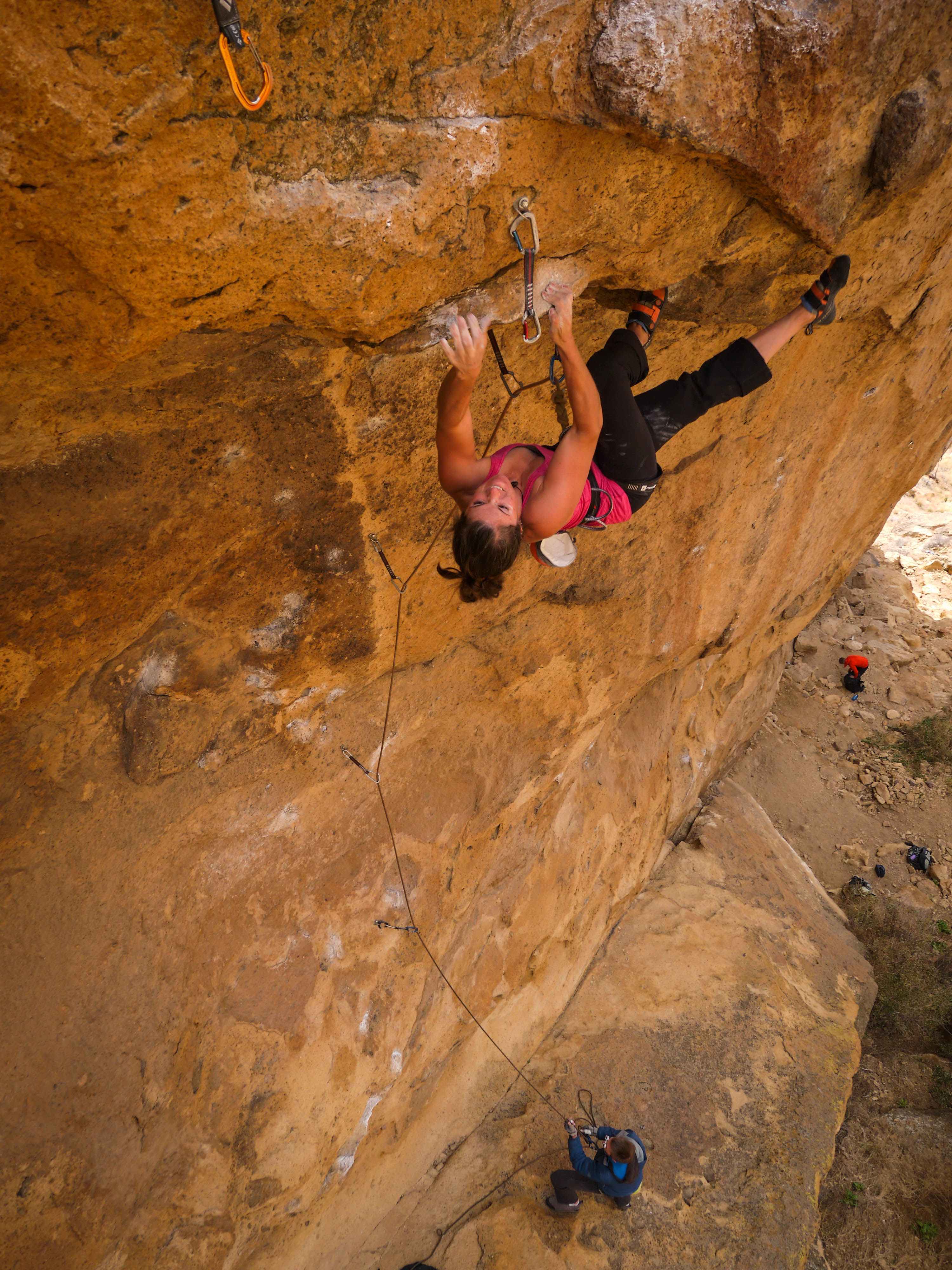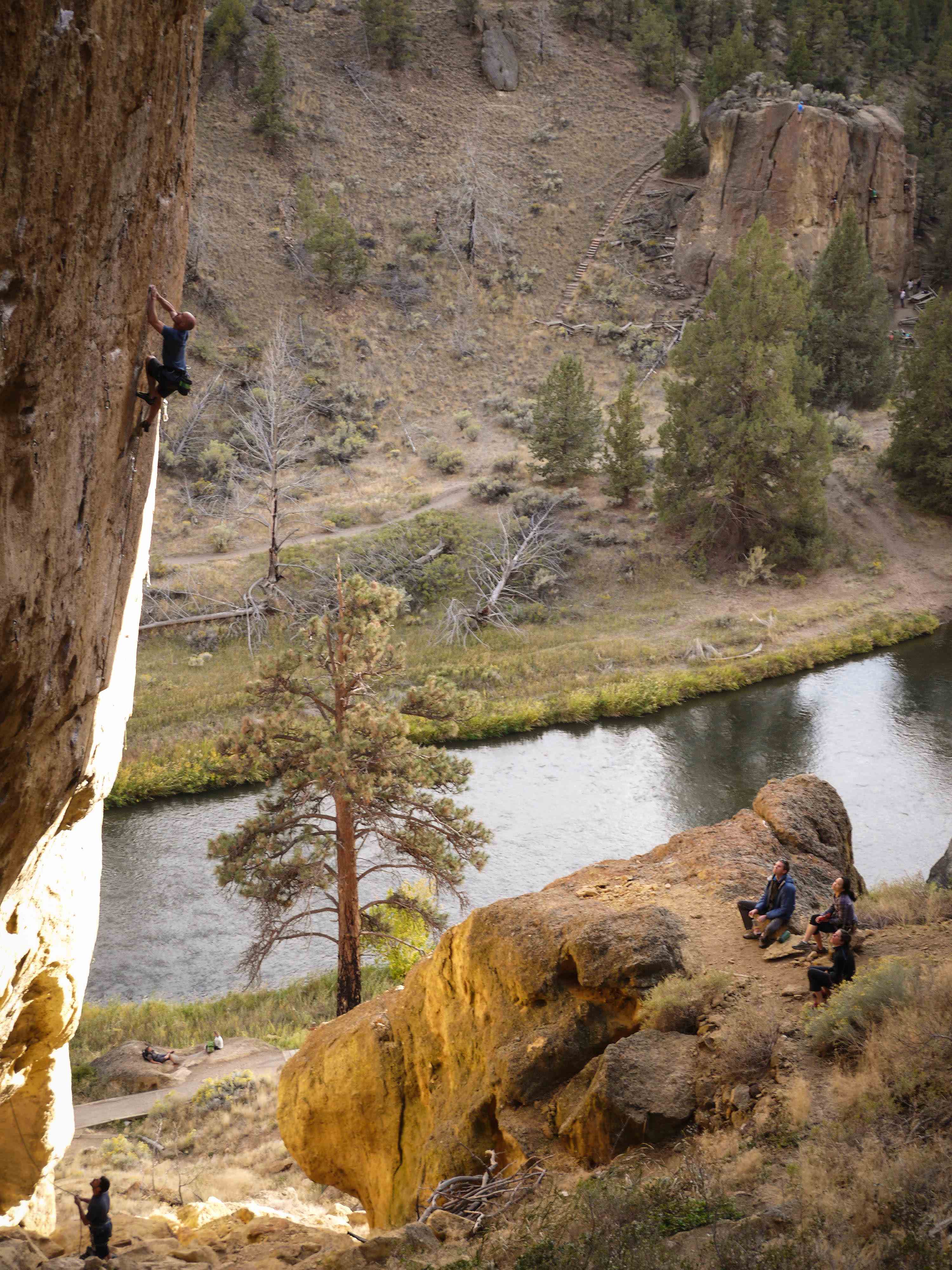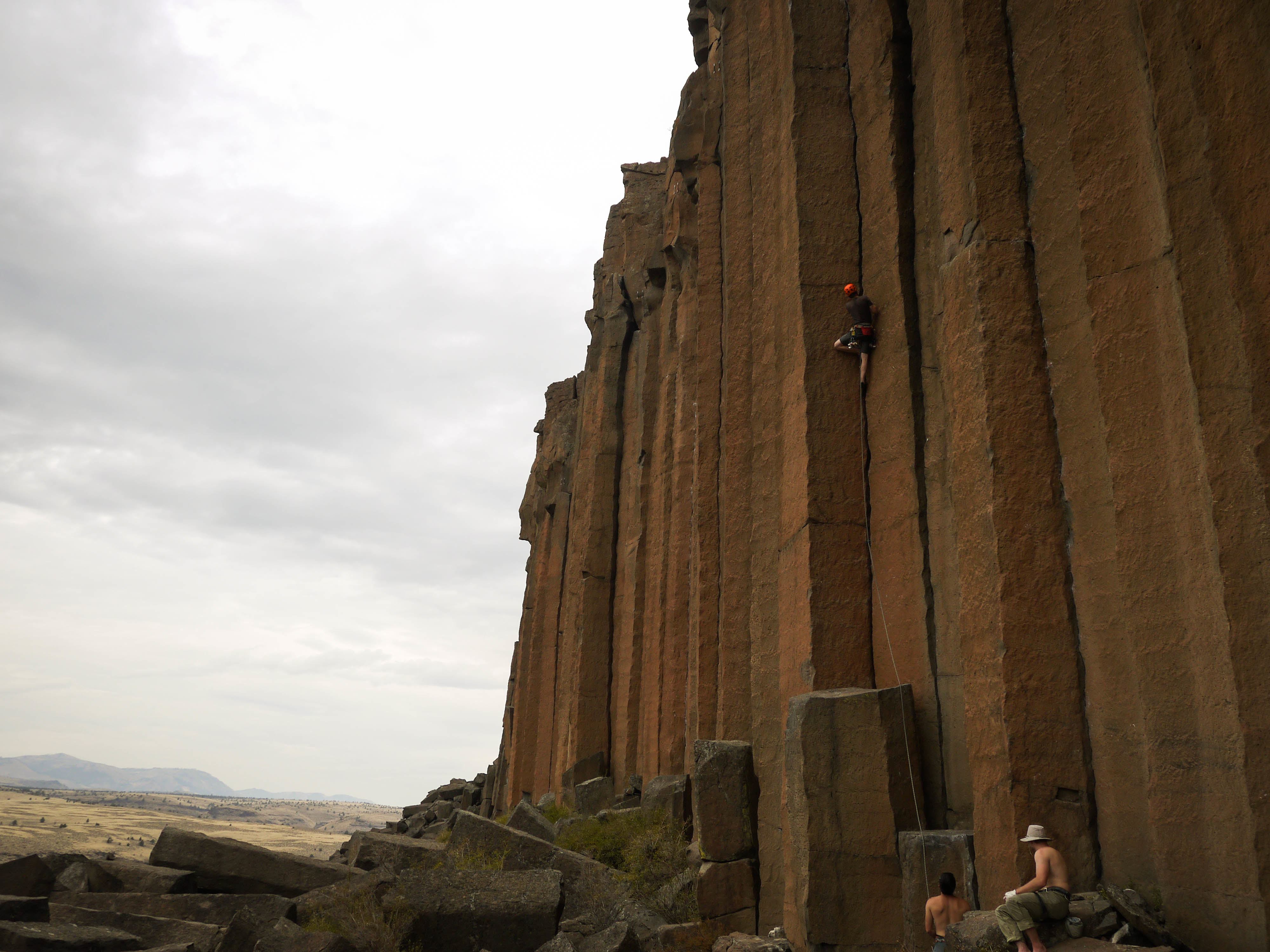Climbing year round on basalt splitters, volcanic tuff faces, and amazing columns, Smith Rock offers a variety of climbing, relatively close to the Bay Area. Located in the high desert of Central Oregon, Smith almost always has dry weather. On my way down from Squamish, I stopped by the world-class sport climbing area.

Jess Groseth takes on the steep section of The Quickening (5.12c). This route features unusually steep climbing for Smith
Smith Rocks development began in the 60s but in the early 1980s, Smith became the spot to climb. Local Alan Watts rappel bolted Watts Tots, a 5.12b on the front wall. Watts ushered in the concept of sport climbing to the United States, pushing American climbing towards European standards.
A video of Alan Watts on Rude Boys back in 1986, when climbers wore lycra without any sort of hipster irony
While Smith’s lines feature bolts, they are a far cry from today’s definition of sport climbing. They are more like 80’s face climbing, run out and bold. There are a number of amazing moderate routes though that protect well. Newer areas like the Llama Wall have more sport climbing style routes. The Lower Gorge at Smith Rock contains amazing bolted lines with much better protection. The stem boxes include the classic Pure Palm, which is 60 feet of perfect stemming in a box.

Ryan Palo on White Wedding, a classic 5.14 in Aggro Gully.
Forty minutes north of Smith Rock rests the basalt splitters of Trout Creek. Cracks and columns define the area with stem boxes between them. The dense concentration of high quality routes and the consistent size of the cracks make the crag reminiscent of Indian Creek but far closer to California. The cracks mostly range in the 5.10 to 5.12 range. Having a solid base of crack experience helps as does a triple set of camming devices.

A climber on JR Token, a great 5.10 handcrack on the Main Wall at Trout.
Over the past decade, I have taken half dozen trips to Smith and have always been impressed. The high quality of the volcanic tuff and the cryptic climbing of the basalt makes the area amazing. The historic climbing significance makes the area a requirement for any climber.

